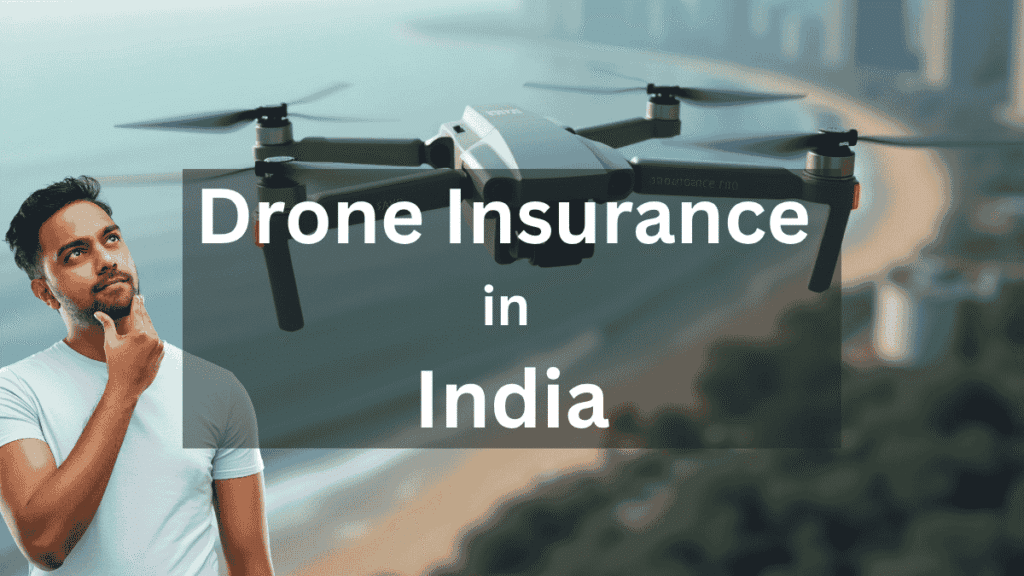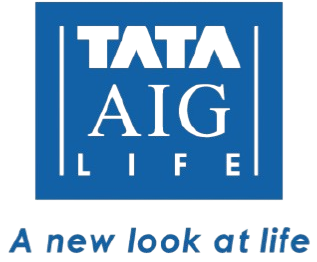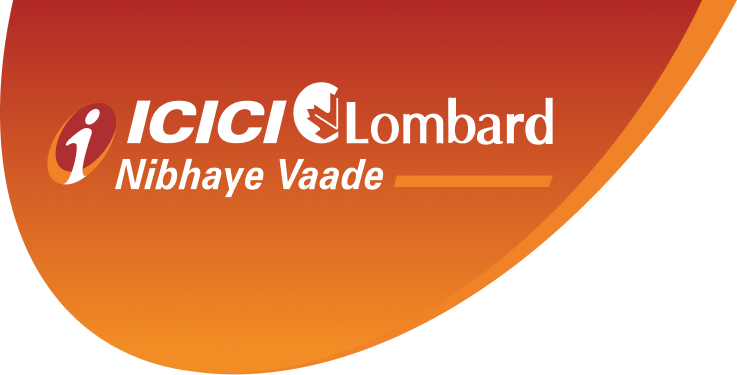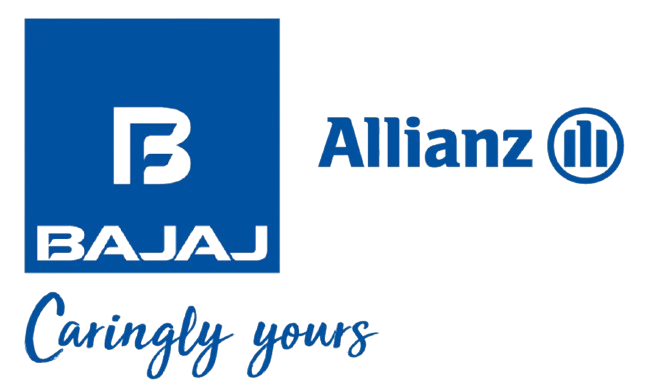Welcome to the ultimate guide to drone insurance in India for 2025! Drones are no longer just toys—they’re powerful tools revolutionizing agriculture, filmmaking, logistics, and more. With India’s drone market projected to reach $4.2 billion in 2025 and soar to $23 billion by 2030, according to industry reports, the skies are buzzing with opportunity. But with great potential comes great responsibility. Whether you’re a hobbyist capturing stunning aerial shots or a business delivering packages, drone insurance is your safety net against accidents, damages, and legal troubles.
In India, flying a drone without proper insurance can land you in hot water, as the Directorate General of Civil Aviation (DGCA) mandates third-party liability coverage for most drones. This comprehensive guide is your one-stop resource for understanding drone insurance in India. From regulations to costs, top providers to claim processes, we’ll break it all down in simple terms, making it perfect for beginners.
Why Drone Insurance is a Must in India?
Imagine this: You’re flying your drone to capture a breathtaking sunset, but a sudden gust of wind sends it crashing into a neighbour’s car. Or, you’re using a drone for your agriculture business, and it malfunctions, damaging crops. These scenarios highlight why drone insurance is essential. It protects you from financial losses, covers damages to others, and ensures you comply with Indian laws.
In India, the Drone Rules 2021, enforced by the DGCA, require third-party liability insurance for all drones weighing over 250 grams. This insurance covers damages to people or property caused by your drone, similar to car insurance. Without it, you risk fines, legal action, or even having your drone grounded. Beyond compliance, insurance offers peace of mind, letting you focus on flying rather than worrying about what-ifs.
This guide is tailored for beginners, whether you’re a hobbyist, a budding entrepreneur, or a professional drone pilot. We’ll cover everything you need to know about drone insurance in India for 2025, including regulations, coverage types, costs, and how to choose the best drone insurance policy in India. Let’s dive in!
Drone Regulations in India (2025): The Legal Landscape
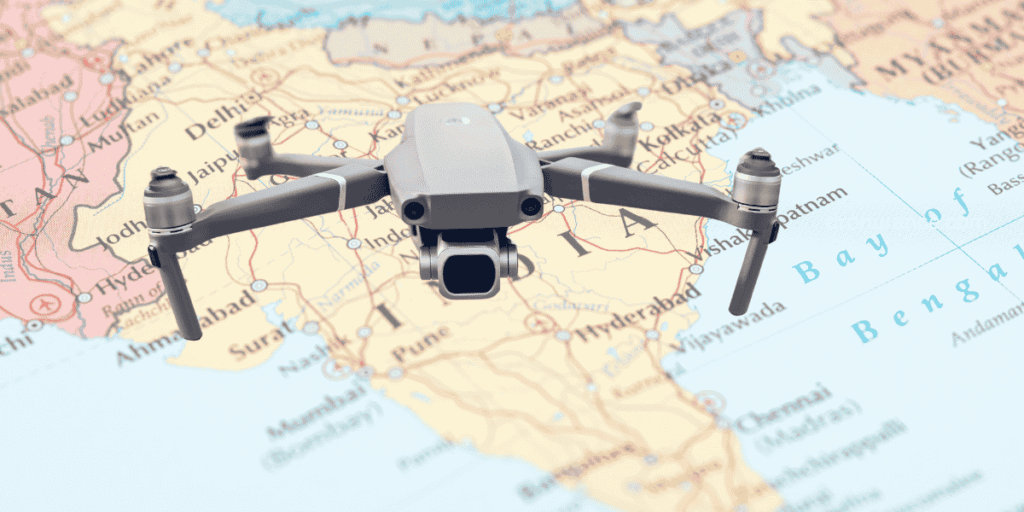
Before you buy insurance, you need to understand the rules governing drone operations in India. The Drone Rules, 2021, updated through amendments like the Drone (Amendment) Rules, 2023, form the backbone of Drone Insurance Regulations In India. As of June 2025, these rules categorize drones by weight and outline requirements for registration, licensing, and insurance.
Drone Categories and Requirements
Drones are classified into five categories based on their maximum take-off weight. Here’s a breakdown, based on the latest DGCA guidelines from May 2025:
| Category | Weight Range | Registration Required | Pilot License Required | Insurance Required | Notes |
| Nano Unmanned Aircraft System | ≤ 250 grams | No | No | No | Can fly up to 50 ft (15m) in uncontrolled airspace; no permits needed except in controlled areas. |
| Micro Unmanned Aircraft System | > 250g ≤ 2kg | Yes | Yes (except non-commercial use) | Yes (except nano) | No permits for recreational use; commercial use requires permits. |
| Small Unmanned Aircraft System | > 2kg ≤ 25kg | Yes | Yes | Yes | Mandatory for all uses. |
| Medium Unmanned Aircraft System | > 25kg ≤ 150kg | Yes | Yes | Yes | Mandatory for all uses. |
| Large Unmanned Aircraft System | > 150kg | Yes | Yes | Yes | Mandatory for all uses. |
Key Insurance Takeaway: Third-party liability insurance is mandatory for all drones except nano drones (≤ 250g), as per the Motor Vehicles Act, 1988. This insurance must cover damages up to ₹7.5 lakh for property damage and unlimited compensation for bodily injury or death.
Key Regulatory Highlights
- Registration: All drones over 250 grams must be registered on the Digital Sky platform, receiving a Unique Identification Number (UIN).
- Pilot Licensing: A Remote Pilot Certificate (RPC) is required for commercial operations or drones over 2kg, obtainable from DGCA-approved Remote Pilot Training Organizations (RPTOs).
- Airspace Zones: India’s airspace is divided into Green (unrestricted), Yellow (controlled), and Red (prohibited) zones. Check the Digital Sky platform for permissions.
- Foreign Operators: Foreigners cannot fly drones in India; commercial operations require leasing to an Indian entity with DGCA approval.
- Penalties: Violating regulations, including flying without insurance, can result in fines or imprisonment.
Why It Matters: Understanding these rules ensures you buy the right insurance policy and avoid legal pitfalls. For example, a hobbyist with a nano drone may not need insurance, but a commercial operator with a small drone must have comprehensive coverage.
Types of Drone Insurance: What’s Covered?
Drone insurance in India comes in various forms, tailored to different needs. Here’s a beginner-friendly overview of the main types and add-ons available in 2025.
1. Third-Party Liability Insurance
- What It Covers: Damages to third parties, such as property damage (e.g., crashing into a car) or bodily injury (e.g., injuring a bystander).
- Who Needs It: Mandatory for all drones over 250 grams, as per DGCA rules.
- Coverage Limits: Typically ₹7.5 lakh for property damage; unlimited for bodily injury/death.
- Example: If your drone damages a neighbor’s window, this insurance covers repair costs.
2. Hull Coverage
- What It Covers: Physical damage to your drone, including crashes, theft, or loss.
- Who Needs It: Recommended for expensive drones or commercial operators.
- Coverage Limits: Varies based on the drone’s value (e.g., ₹50,000–₹5 lakh).
- Example: If your drone crashes into a tree, hull coverage pays for repairs or replacement.
3. Payload Coverage
- What It Covers: Damage to equipment carried by the drone, like cameras, sensors, or sprayers.
- Who Needs It: Filmmakers, surveyors, or agricultural operators with high-value payloads.
- Coverage Limits: Depends on equipment value (e.g., ₹20,000–₹2 lakh).
- Example: If your drone’s camera is damaged during a shoot, payload coverage covers replacement costs.
4. Add-Ons
- Beyond Visual Line of Sight (BVLOS): Covers operations where the drone is flown beyond the pilot’s sight, common in logistics or large-scale agriculture.
- Night Flying: Covers flights between sunset and sunrise, ideal for events or surveillance.
- Training Coverage: Protects drones used by RPTOs or training institutes.
- Transit Coverage: Covers damage during drone transportation.
- Example: A logistics company using BVLOS for deliveries needs this add-on to cover unseen risks.
Why It Matters: Choosing the right coverage depends on your drone’s use. Hobbyists may need only third-party liability, while commercial operators might require comprehensive plans with add-ons.
To know about all the terms related to Drone Insurance see- Terms Related To Drone Insurance
Top Drone Insurance Providers in India for 2025
Several insurers offer drone insurance in India, each with unique plans and features. Based on the latest data from platforms like Policybazaar and TropoGo, here are the top Drone Insurance Companies in India and drone insurance cost in India for 2025, along with their offerings.
1. TropoGo: The Pioneer in Drone Insurance
- Overview: TropoGo is India’s leading drone insurance platform, partnering with insurers like TATA AIG and Bajaj Allianz. Known for its “pay as you fly” model, it’s ideal for flexible needs.
- Plans:
- Commercial Pilot: Hourly, daily, or monthly coverage starting at ₹4,000 annually.
- Enterprise Client: Tailored plans for unlimited flights, covering up to 20 drones.
- BVLOS Add-On: ₹5,000–₹15,000 for high-risk operations.
- Features: Online purchase in 5 minutes, DGCA-compliant policies, payload and night flying add-ons.
- Claim Settlement Ratio: 96% (IRDAI 2022–23).
- Best For: Hobbyists, commercial pilots, and enterprises.
2. HDFC ERGO: Trusted and Reliable
- Overview: Partnered with TropoGo since 2019, HDFC ERGO offers comprehensive drone insurance with a strong claim settlement record.
- Plans:
- Recreational: ₹4,000–₹10,000 annually for basic coverage.
- Commercial: ₹10,000–₹30,000 with hull and payload options.
- Night Flying Add-On: ₹3,000–₹8,000.
- Features: 9,800+ cashless service providers, fast surveyor appointment, Digital Sky integration.
- Claim Settlement Ratio: 96% (IRDAI 2022–23).
- Best For: Businesses and recreational users.
3. TATA AIG: Innovative Solutions
- Overview: Collaborates with the Drone Federation of India (DFI) for tailored policies, focusing on commercial and training needs.
- Plans:
- Commercial: ₹8,000–₹25,000 annually.
- Enterprise: ₹20,000–₹60,000 for multiple drones.
- Training Cover: ₹10,000–₹20,000 for RPTOs.
- Features: BVLOS and payload coverage, high claim settlement ratio, digital policy management.
- Claim Settlement Ratio: 98.4% (IRDAI 2022–23).
- Best For: Commercial operators and training institutes.
4. ICICI Lombard: Accessible and Comprehensive
- Overview: Offers drone insurance with extensive branch support and online convenience.
- Plans:
- Recreational: ₹5,000–₹12,000 annually.
- Commercial: ₹10,000–₹35,000 with payload protection.
- BVLOS Add-On: ₹6,000–₹15,000.
- Features: 600+ branches, 24/7 support, DGCA-compliant policies.
- Claim Settlement Ratio: 96% (IRDAI 2022–23).
- Best For: Hobbyists and commercial operators.
5. Bajaj Allianz: Affordable and Flexible
- Overview: Known for competitive pricing, Bajaj Allianz offers drone insurance through partnerships like TropoGo.
- Plans:
- Recreational: ₹4,000–₹10,000 annually.
- Commercial: ₹8,000–₹25,000 with payload options.
- BVLOS Add-On: ₹5,000–₹12,000.
- Features: Fast claims, affordable premiums, night flying add-ons.
- Claim Settlement Ratio: 96% (IRDAI 2022–23).
- Best For: Hobbyists and small businesses.
Comparison Table: Top Drone Insurance Providers
| Insurer | Premium Range (Annual) | Third-Party Liability | Hull Coverage | BVLOS Add-On | Payload Cover | Claim Settlement Ratio | Best For |
| TropoGo | ₹4,000–₹50,000 | ₹7.5 lakh | Yes | Yes | Yes | 96% | Commercial, Enterprise |
| HDFC ERGO | ₹4,000–₹30,000 | ₹7.5 lakh | Yes | Yes | Yes | 96% | Commercial, Recreational |
| TATA AIG | ₹8,000–₹60,000 | ₹7.5 lakh | Yes | Yes | Yes | 98.4% | Commercial, Training |
| ICICI Lombard | ₹5,000–₹35,000 | ₹7.5 lakh | Yes | Yes | Yes | 96% | Commercial, Hobbyists |
| Bajaj Allianz | ₹4,000–₹25,000 | ₹7.5 lakh | Yes | Yes | Yes | 96% | Hobbyists, Small Businesses |
Why It Matters: Comparing providers helps you find a policy that fits your budget and needs. TropoGo’s flexibility is great for occasional flyers, while TATA AIG’s high claim settlement ratio suits businesses seeking reliability.
How to Choose the Right Drone Insurance Policy?
Selecting the best drone insurance policy can feel overwhelming, but it’s easier when you consider these factors:
1. Drone Type and Weight
- Nano Drones (≤ 250g): No insurance required, but consider hull coverage for expensive models.
- Micro/Small Drones (>250g ≤ 25kg): Mandatory third-party liability; add hull or payload for commercial use.
- Medium/Large Drones (>25kg): Comprehensive coverage with BVLOS or payload add-ons.
2. Usage Type
- Recreational: Basic third-party liability (e.g., Bajaj Allianz’s ₹4,000 plan).
- Commercial: Comprehensive plans with add-ons (e.g., TropoGo’s enterprise plans).
- Training: Specialized coverage for RPTOs (e.g., TATA AIG’s training cover).
3. Coverage Needs
- Ensure third-party liability meets DGCA requirements (₹7.5 lakh).
- Add hull coverage for drone protection and payload coverage for equipment.
- Consider add-ons like BVLOS for logistics or night flying for events.
4. Budget
- Compare premiums but don’t skimp on coverage. For example, TropoGo’s pay-as-you-fly model saves money for occasional users.
- Check for discounts for DGCA-certified pilots or safe flying records.
5. Insurer Reliability
- Look for high claim settlement ratios (e.g., TATA AIG’s 98.4%).
- Read customer reviews on platforms like Policybazaar or X for real-world insights.
- Choose insurers with fast surveyor appointments (within 24 hours).
6. DGCA Compliance
- Verify the policy aligns with Drone Rules, 2021, and integrates with Digital Sky.
- Ensure coverage for your drone’s weight class and flight zones (Green, Yellow, Red).
Tips for Beginners:
- Use comparison platforms like Policybazaar to get quotes from multiple insurers.
- Start with basic coverage if you’re a hobbyist, upgrading as your needs grow.
- Consult insurers like TropoGo for tailored advice based on your use case.
Why It Matters: The right policy balances cost, coverage, and compliance, ensuring you’re protected without breaking the bank.
Commercial Drone Operators may visit: Essential Drone Insurance Strategies For Commercial Operators In India In 2025
Cost of Drone Insurance in India
The cost of drone insurance in India varies widely, influenced by factors like drone type, usage, and coverage. Here’s a detailed breakdown based on 2025 data from TropoGo and Policybazaar.
Average Premium Ranges
| Coverage Type | Premium Range (Annual) | Notes |
| Third-Party Liability | ₹4,000–₹20,000 | Mandatory for drones >250g; covers ₹7.5 lakh property damage. |
| Hull Coverage | ₹5,000–₹30,000 | Depends on drone value; recommended for commercial drones. |
| Payload Coverage | ₹5,000–₹15,000 | Covers cameras, sensors; essential for filmmaking or agriculture. |
| BVLOS Add-On | ₹5,000–₹15,000 | For logistics or large-scale operations. |
| Night Flying Add-On | ₹3,000–₹8,000 | For events or surveillance after sunset. |
| Comprehensive (All-In) | ₹10,000–₹50,000+ | Includes liability, hull, payload, and add-ons; suits enterprises. |
Factors Affecting Costs
#Drone Weight:
- Micro drones (>250g ≤ 2kg): Lower premiums (₹4,000–₹12,000).
- Small drones (>2kg ≤ 25kg): Higher premiums (₹8,000–₹30,000).
- Medium/large drones (>25kg): ₹15,000–₹60,000+ due to increased risk.
#Usage Type:
- Recreational: ₹4,000–₹12,000 annually.
- Commercial: ₹10,000–₹50,000 due to higher liability and equipment value.
#Flight Zones:
- Green zones: Lower premiums.
- Yellow/Red zones: Higher premiums due to regulatory restrictions.
#Add-Ons:
- BVLOS, night flying, or payload coverage increases premiums by ₹3,000–₹15,000.
#Operator Experience:
- DGCA-certified pilots may get discounts.
- Inexperienced operators may pay more.
#Drone Value:
High-value drones (e.g., DJI Mavic 3, ₹2 lakh) require higher hull coverage, increasing costs.
Example Costs:
- Hobbyist with a Micro Drone: ₹4,000 for third-party liability (Bajaj Allianz).
- Filmmaker with a Small Drone: ₹20,000 for comprehensive coverage with payload (ICICI Lombard).
- Logistics Company with Medium Drone: ₹50,000 for enterprise plan with BVLOS (TropoGo).
Tips to Save Money:
- Opt for pay-as-you-fly plans (e.g., TropoGo) if you fly occasionally.
- Compare quotes on Policybazaar or insurer websites.
- Bundle add-ons only if necessary to avoid overpaying.
Why It Matters: Understanding costs helps you budget effectively and choose a policy that offers value without compromising coverage.
Also Read: Drone Insurance Subsidies And Government Incentives In India
How to Buy Drone Insurance in India: Step-by-Step Guide

Buying drone insurance in India is quick and convenient, especially with online platforms. Here’s a beginner-friendly guide to purchasing a policy in 2025. For details see -> How To Buy Drone Insurance Online In India
Steps to Buy Drone Insurance
#1. Assess Your Needs:
- Determine your drone’s weight, usage (recreational, commercial), and coverage needs (liability, hull, add-ons).
- Example: A filmmaker needs payload coverage, while a hobbyist may need only liability.
#2. Compare Policies:
- Visit platforms like Policybazaar or TropoGo for quotes.
- Compare premiums, coverage limits, and add-ons from insurers like HDFC ERGO, TATA AIG, or ICICI Lombard.
#3. Provide Drone Details:
- Enter your drone’s make, model, weight, UIN (from Digital Sky), and intended use.
- Specify flight zones (Green, Yellow, Red) and add-ons if needed.
#4. Select Coverage:
- Choose third-party liability (mandatory) and optional hull, payload, or BVLOS coverage.
- Review coverage limits (e.g., ₹7.5 lakh for property damage).
#5. Complete KYC:
- Submit personal details (name, contact) and KYC documents (Aadhaar, PAN).
- Provide drone registration certificate and proof of ownership (e.g., purchase invoice).
#6. Make Payment:
- Pay via UPI, card, or net banking. TropoGo processes payments in 5 minutes.
- Premiums start at ₹4,000 for basic plans.
#7. Receive Policy:
- Get policy documents via email or app.
- Link the policy to your drone’s UIN on Digital Sky for compliance.
Documents Required
- Drone registration certificate (UIN).
- DGCA Remote Pilot Certificate (for commercial operators).
- Proof of ownership or purchase invoice.
- KYC documents (Aadhaar, PAN, or passport).
- Recent drone photos (for some insurers).
Where to Buy?
- Online Platforms: TropoGo, Policybazaar, insurer websites (ICICI Lombard, HDFC ERGO).
- Offline: Visit insurer branches (e.g., ICICI Lombard’s 600+ branches) or contact agents.
Time Taken: 5–15 minutes online; 1–2 days offline.
Tips for Beginners:
- Save digital copies of documents for quick uploads.
- Double-check DGCA compliance before purchasing.
- Use TropoGo’s app for a seamless experience.
Why It Matters: A smooth purchase process ensures you’re insured and compliant, letting you fly without delays.
Filing a Drone Insurance Claim: Steps and Best Practices
Accidents happen, but filing a drone insurance claim in India is straightforward if you follow these steps, based on TropoGo and Policybazaar guidelines.
Steps to File a Claim
#1. Notify the Insurer:
- Contact your insurer (e.g., TropoGo, TATA AIG) within 24 hours of the incident.
- Use the insurer’s app, website, or helpline (e.g., ICICI Lombard’s 1800-2666).
#2. Provide Incident Details:
- Submit details like date, time, location, and cause (e.g., crash, theft).
- Include photos, videos, or witness statements if available.
#3. Surveyor Inspection:
- The insurer appoints a surveyor within 24 hours to assess damage.
- Provide access to the drone or incident site.
#4. Submit Documents:
- Drone registration certificate (UIN).
- Policy document.
- Incident report or FIR (for theft or third-party damage).
- Photos/videos of damage.
- Repair estimates or invoices (for hull claims).
#5. Claim Settlement:
- The insurer processes the claim after the surveyor’s report (7–15 days).
- Approved claims are settled via bank transfer or repair/replacement.
Best Practices
- Report incidents immediately to avoid rejection.
- Maintain Digital Sky compliance to strengthen your claim.
- Keep digital copies of documents for quick submission.
- Choose insurers with high claim settlement ratios (e.g., TATA AIG’s 98.4%).
Common Exclusions
- Damage due to intentional misuse or neglect.
- Flying in prohibited zones (e.g., Red zones without permission).
- Operations in adverse weather.
- Wear and tear or depreciation.
Tips for Beginners:
- Track claims via insurer apps (e.g., TropoGo’s real-time tracking).
- Contact the insurer’s helpline for guidance.
- Document incidents thoroughly with photos/videos.
Why It Matters: Knowing the claim process ensures you recover losses quickly and avoid common pitfalls.
Common Mistakes to Avoid When Buying Drone Insurance
Drone insurance in India is evolving fast, but many new operators fall into avoidable traps. These mistakes can lead to inadequate coverage, legal issues, or unexpected expenses. Avoid these mistakes that prevent your drone insurance claim from being denied. Here’s what you need to watch out for:
#1. Ignoring DGCA Compliance
To fly legally and be fully protected:
- Ensure third-party liability coverage of at least ₹7.5 lakh, as recommended by the DGCA.
- Register your drone on the Digital Sky platform and keep documentation updated.
Failing to comply with these can void your insurance in case of a claim.
#2. Choosing Inadequate Coverage
Many operators opt for the cheapest policy, overlooking critical coverage types:
- Hobbyists often skip hull (drone damage) insurance, risking costly repairs.
- Commercial users may miss out on BVLOS (Beyond Visual Line of Sight) or payload coverage, which are essential for advanced operations.
#3. Not Comparing Insurance Plans
Going with the first insurer you find? That’s a mistake.
- Compare quotes on platforms like Policybazaar or TropoGo.
- Different providers offer varying coverage limits, claim processes, and pricing.
Shopping around can save money and provide better protection.
#4. Overlooking Valuable Add-Ons
Basic policies don’t always cover everything you need.
- Add-ons like BVLOS or night flying coverage can shield you from high-risk scenarios.
- For example, TropoGo’s BVLOS add-on costs around ₹5,000, but it’s crucial for operators flying in extended range.
#5. Ignoring the Claims Process
A good policy isn’t just about coverage — it’s also about ease of claiming.
- Look for insurers with fast surveyor appointments and high claim settlement ratios.
- TATA AIG, for example, has an impressive 98.4% claim ratio, making it a trusted name.
#6. Skipping the Policy Fine Print
Many policies have hidden exclusions:
- No coverage in prohibited zones
- No claims for wear and tear or pilot error
- Some policies restrict coverage based on drone weight or type of operation
Always read the fine print before committing.
#7. Missing Policy Renewals
A lapsed policy means no legal protection and no coverage in case of an incident.
- Set renewal reminders
- Opt for auto-renewal options offered by providers like ICICI Lombard
✅ Tips for First-Time Drone Owners
- Make a usage checklist (personal vs. commercial, day vs. night flying, etc.)
- Consult with insurers for custom recommendations
- Review and update your policy annually to stay aligned with new drone regulations
Why This Matters?
Avoiding these mistakes ensures:
- Legal compliance
- Proper financial protection
- Peace of mind during operations
A little due diligence now can save you major headaches later.
Drone Insurance for Specific Use Cases in India: A Comprehensive Guide for 2025
Key Points
- Diverse Applications: Drones are used in India for agriculture, logistics, filmmaking, construction, surveillance, healthcare, recreational activities, and training, each requiring tailored insurance coverage.
- Mandatory Insurance: The Directorate General of Civil Aviation (DGCA) mandates third-party liability insurance for drones over 250 grams, critical for commercial use cases like agriculture and logistics.
- Specialized Coverage: Use cases like agriculture need payload and chemical liability coverage, while logistics requires Beyond Visual Line of Sight (BVLOS) protection.
- Cost Variability: Premiums range from ₹4,000 for hobbyists to ₹60,000+ for enterprise operations, depending on drone type, usage, and add-ons.
- Top Providers: TropoGo, TATA AIG, ICICI Lombard, HDFC ERGO, and Bajaj Allianz offer customized plans for various drone applications.
Why Drone Insurance Matters?
Drones are transforming industries in India, but their operations come with risks like equipment damage, third-party liabilities, and regulatory non-compliance. Whether you’re spraying crops, delivering packages, or filming a movie, drone insurance protects your investment and ensures you meet DGCA requirements. Each use case has unique needs, such as payload protection for agriculture or privacy coverage for filmmaking, making specialized insurance essential.
Understanding Drone Insurance for Specific Use Cases in India
India’s drone industry is booming, with a projected market size of $4.2 billion in 2025, expected to reach $23 billion by 2030, according to industry reports. Drones are revolutionizing sectors like agriculture, logistics, filmmaking, construction, surveillance, healthcare, and training, driven by liberalized regulations like the Drone Rules, 2021 and initiatives such as the Production-Linked Incentive (PLI) scheme. However, each use case presents unique risks, from crop damage in agriculture to privacy concerns in filmmaking, necessitating tailored drone insurance policies.
Under the UAS Rules, 2020, third-party liability insurance is mandatory for drones over 250 grams, covering damages up to ₹7.5 lakh for property and unlimited compensation for bodily injury or death. Beyond compliance, insurance protects against financial losses from drone damage, payload loss, or legal liabilities.
This guide dives into drone insurance for specific use cases in India, offering a detailed look at coverage needs, costs, and top providers like TropoGo, TATA AIG, and ICICI Lombard. Whether you’re a farmer, filmmaker, or logistics provider, you’ll find practical advice to choose the best policy for 2025.
Drone Insurance Basics
Before exploring specific use cases, here’s a quick overview of drone insurance types:
- Third-Party Liability: Covers damages or injuries to others, mandatory for most drones.
- Hull Coverage: Protects the drone from accidents, theft, or loss.
- Payload Coverage: Covers equipment like cameras, sensors, or medical supplies.
- Add-Ons: Include BVLOS, night flying, privacy invasion, or training coverage for specialized operations.
Why Use Case-Specific Insurance Matters?
Each drone application has distinct risks and regulatory requirements. For example, agricultural drones need chemical liability coverage, while delivery drones require BVLOS protection. Choosing a policy tailored to your use case ensures comprehensive protection and compliance with DGCA guidelines, such as registration on the Digital Sky platform.
Top Providers in India
Leading insurers in 2025 include:
- TropoGo: Offers flexible plans with pay-as-you-fly options, ideal for varied use cases.
- TATA AIG: Partners with the Drone Federation of India (DFI) for tailored commercial policies.
- ICICI Lombard: Provides comprehensive coverage with add-ons like privacy invasion.
- HDFC ERGO: Known for reliable claims and partnerships with TropoGo.
- Bajaj Allianz: Affordable plans for hobbyists and small businesses.
Now, let’s explore each use case in detail, including risks, coverage needs, costs, and provider comparisons.
Drone Insurance for Agriculture (Kisan Drones)
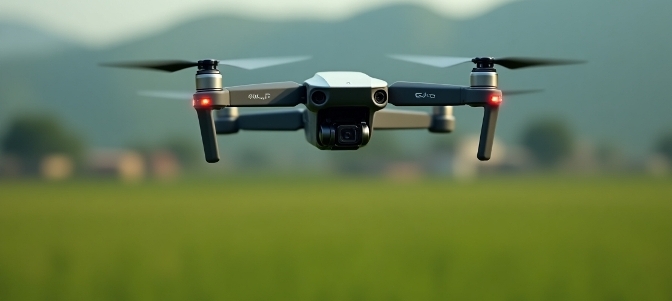
Why Drones Are Vital in Agriculture?
Drones are transforming Indian agriculture through precision farming, crop monitoring, and pesticide spraying, supported by initiatives like the Kisan Drone Subsidy Programme and NaMo Drone Didi Scheme, which aim to equip 15,000 women-led Self-Help Groups with drones by 2026. Agricultural drone insurance in India market is expected to grow at a 38.5% CAGR, reaching $121.43 million by 2030, per industry reports. Drones help farmers detect crop failures, monitor irrigation, and apply fertilizers, but they face risks like payload damage or third-party liabilities.
Risks in Agricultural Drone Operations
- Crop Damage: A malfunctioning drone could damage crops or neighboring fields.
- Chemical Liability: Spraying pesticides or fertilizers poses risks of environmental or health damage.
- BVLOS Operations: Large farms require drones to fly beyond visual line of sight, increasing accident risks.
- Equipment Damage: Payloads like sprayers or sensors are costly to replace.
Insurance Needs for Agricultural Drones
- Third-Party Liability: Covers damages to crops, property, or individuals (mandatory, ₹7.5 lakh limit).
- Hull Coverage: Protects the drone from crashes or technical failures.
- Payload Coverage: Covers sprayers, sensors, or fertilizers (e.g., ₹20,000–₹2 lakh).
- Chemical Liability: Protects against claims from pesticide or fertilizer drift.
- BVLOS Add-On: Essential for large-scale operations over vast fields.
Top Providers for Agricultural Drone Insurance
- TropoGo: Offers comprehensive plans with payload and BVLOS add-ons, starting at ₹4,000 annually. Their app simplifies policy management (TropoGo).
- TATA AIG: Provides tailored policies with chemical liability and BVLOS coverage, ideal for commercial farmers (TATA AIG).
- ICICI Lombard: Offers payload and liability coverage, with add-ons for BVLOS (ICICI Lombard).
- Bajaj Allianz: Affordable plans with payload protection, suitable for small-scale farmers.
Cost of Agricultural Drone Insurance
Premiums range from ₹10,000 to ₹50,000 annually, depending on drone value, payload type, and add-ons. Basic third-party liability starts at ₹4,000, while comprehensive plans with BVLOS and chemical liability can reach ₹50,000+.
Comparison Table: Agricultural Drone Insurance Providers
| Provider | Third-Party Liability | Hull Coverage | Payload Coverage | BVLOS Add-On | Chemical Liability | Starting Price (₹) |
| TropoGo | Yes (₹7.5 lakh) | Yes | Yes | Yes | Yes | 4,000 |
| TATA AIG | Yes (₹7.5 lakh) | Yes | Yes | Yes | Yes | 8,000 |
| ICICI Lombard | Yes (₹7.5 lakh) | Yes | Yes | Yes | Yes | 5,000 |
| Bajaj Allianz | Yes (₹7.5 lakh) | Yes | Yes | Yes | Yes | 4,000 |
Example: A farmer using a DJI Agras T40 for pesticide spraying might choose TropoGo’s comprehensive plan (₹20,000) with payload and BVLOS add-ons to cover crop damage risks and comply with DGCA rules.
Tips for Farmers:
- Check for subsidies under the Sub-Mission on Agricultural Mechanization (SMAM), which offers up to ₹5 lakh for drone purchases, reducing overall costs.
- Ensure BVLOS coverage for large farms, as per DGCA’s evolving regulations.
- Compare quotes on Policybazaar for the best rates.
Drone Insurance for Logistics and Delivery
Why Drones Are Key in Logistics?
Drones are revolutionizing last-mile delivery in India, with companies like Skye Air Mobility and Redwing Labs testing drone deliveries in urban and rural areas. The logistics sector benefits from faster delivery times and reduced costs, but operations often involve BVLOS flights and valuable payloads, increasing risks.
Risks in Logistics Drone Operations
- BVLOS Risks: Flying beyond visual line of sight increases collision risks.
- Payload Loss: Valuable goods like electronics or medical supplies can be damaged or lost.
- Third-Party Liability: Urban deliveries risk damaging property or injuring people.
- Regulatory Compliance: Strict DGCA rules require permissions for Yellow/Red zones.
Insurance Needs for Logistics Drones
- Third-Party Liability: Covers damages or injuries in populated areas (mandatory, ₹7.5 lakh).
- Hull Coverage: Protects drones from crashes or theft.
- Payload Coverage: Covers the value of delivered goods (e.g., ₹10,000–₹5 lakh).
- BVLOS Add-On: Essential for long-distance deliveries.
- Transit Coverage: Protects drones during transportation to delivery sites.
Top Providers for Logistics Drone Insurance
- TropoGo: Offers BVLOS and payload coverage, with pay-as-you-fly plans for flexible operations.
- ICICI Lombard: Provides comprehensive plans with BVLOS and transit add-ons.
- HDFC ERGO: Partners with TropoGo for logistics-focused policies.
- TATA AIG: Tailored plans for commercial operators, including delivery services.
Cost of Logistics Drone Insurance
Premiums range from ₹15,000 to ₹60,000 annually, with BVLOS and payload coverage increasing costs. Basic liability starts at ₹10,000, while enterprise plans can exceed ₹50,000.
Comparison Table: Logistics Drone Insurance Providers
| Provider | Third-Party Liability | Hull Coverage | Payload Coverage | BVLOS Add-On | Transit Coverage | Starting Price (₹) |
| TropoGo | Yes (₹7.5 lakh) | Yes | Yes | Yes | Yes | 15,000 |
| ICICI Lombard | Yes (₹7.5 lakh) | Yes | Yes | Yes | Yes | 10,000 |
| HDFC ERGO | Yes (₹7.5 lakh) | Yes | Yes | Yes | Yes | 12,000 |
| TATA AIG | Yes (₹7.5 lakh) | Yes | Yes | Yes | Yes | 20,000 |
Example: A logistics startup like Skye Air Mobility might opt for ICICI Lombard’s comprehensive plan (₹30,000) with BVLOS and payload coverage for urban deliveries.
Tips for Logistics Operators:
- Ensure BVLOS coverage aligns with DGCA’s experimental trial guidelines.
- Use TropoGo’s app for real-time policy management during frequent flights.
- Verify coverage for Yellow/Red zones on Digital Sky.
For Details See : Drone Insurance For Delivery Services In India
Drone Insurance for Filmmaking and Photography
Why Drones Are Essential in Filmmaking?
Drones are a game-changer for wedding photographers, filmmakers, and content creators, capturing stunning aerial shots. With India’s media industry growing, drones like the DJI Mavic 3 are popular, but they face risks like equipment damage and privacy concerns.
Risks in Filmmaking Drone Operations
- Equipment Damage: High-value cameras (e.g., RED Komodo, ₹5 lakh) are at risk of damage.
- Privacy Invasion: Filming over private property can lead to legal claims.
- Third-Party Liability: Urban or event shoots risk property damage or injuries.
- Night Flying: Evening shoots require specific coverage.
Insurance Needs for Filmmaking Drones
- Third-Party Liability: Covers damages or injuries (mandatory, ₹7.5 lakh).
- Hull Coverage: Protects the drone from crashes or theft.
- Payload Coverage: Covers cameras and lenses.
- Privacy Invasion Add-On: Protects against privacy-related claims.
- Night Flying Add-On: Covers operations after sunset.
Top Providers for Filmmaking Drone Insurance
- Policybazaar: Offers plans for filmmakers, with payload and privacy coverage (Policybazaar).
- TropoGo: Provides comprehensive coverage with payload protection.
- ICICI Lombard: Includes privacy invasion add-ons, ideal for urban shoots.
- Bajaj Allianz: Affordable plans for small-scale filmmakers.
Cost of Filmmaking Drone Insurance
Premiums range from ₹8,000 to ₹35,000 annually, with payload and privacy add-ons increasing costs. Basic liability starts at ₹5,000.
Comparison Table: Filmmaking Drone Insurance Providers
| Provider | Third-Party Liability | Hull Coverage | Payload Coverage | Privacy Invasion | Night Flying | Starting Price (₹) |
| Policybazaar | Yes (₹7.5 lakh) | Yes | Yes | Yes | Yes | 8,000 |
| TropoGo | Yes (₹7.5 lakh) | Yes | Yes | No | Yes | 4,000 |
| ICICI Lombard | Yes (₹7.5 lakh) | Yes | Yes | Yes | Yes | 5,000 |
| Bajaj Allianz | Yes (₹7.5 lakh) | Yes | Yes | No | Yes | 4,000 |
Example: A wedding photographer using a DJI Mavic 3 might choose Policybazaar’s plan (₹15,000) with payload and night flying coverage for evening shoots.
Tips for Filmmakers:
- Ensure payload coverage matches camera value.
- Check for privacy add-ons if filming in residential areas.
- Compare quotes on Policybazaar for cost-effective options.
Drone Insurance for Construction and Surveying
Why Drones Are Used in Construction?
Drones are critical for construction and surveying, offering aerial mapping, site inspections, and progress monitoring. Companies like IG Drones use drones for infrastructure projects, but operations in harsh environments pose risks.
Risks in Construction Drone Operations
- Equipment Damage: Cameras and sensors are vulnerable in rugged sites.
- Third-Party Liability: Flying over construction sites risks worker injuries or property damage.
- Hull Damage: Drones face hazards like scaffolding or cranes.
Insurance Needs for Construction Drones
- Third-Party Liability: Covers damages or injuries (mandatory, ₹7.5 lakh).
- Hull Coverage: Protects drones from site-specific hazards.
- Payload Coverage: Covers cameras, LiDAR, or sensors.
- BVLOS Add-On: Useful for large-scale surveying.
Top Providers for Construction Drone Insurance
- TropoGo: Offers coverage for mapping and surveying, with payload and BVLOS add-ons.
- TATA AIG: Provides tailored plans for construction operators.
- ICICI Lombard: Comprehensive coverage for site inspections.
Cost of Construction Drone Insurance
Premiums range from ₹10,000 to ₹40,000 annually, with payload and BVLOS coverage increasing costs.
Comparison Table: Construction Drone Insurance Providers
| Provider | Third-Party Liability | Hull Coverage | Payload Coverage | BVLOS Add-On | Starting Price (₹) |
| TropoGo | Yes (₹7.5 lakh) | Yes | Yes | Yes | 10,000 |
| TATA AIG | Yes (₹7.5 lakh) | Yes | Yes | Yes | 8,000 |
| ICICI Lombard | Yes (₹7.5 lakh) | Yes | Yes | Yes | 5,000 |
Example: A surveying firm using drones for highway projects might choose TATA AIG’s plan (₹25,000) with BVLOS and payload coverage.
Tips for Construction Operators:
- Ensure coverage for rugged environments.
- Verify BVLOS add-ons for large sites.
- Use TropoGo for flexible plans.
Drone Insurance for Surveillance and Security
Why Drones Are Used in Surveillance?
Drones are employed for border monitoring, infrastructure security, and private property surveillance, requiring high-resolution cameras and operations in sensitive areas.
Risks in Surveillance Drone Operations
- Privacy Concerns: Capturing private property can lead to legal claims.
- Third-Party Liability: Flying in populated or sensitive areas risks damage or injury.
- Equipment Damage: High-value cameras need protection.
Insurance Needs for Surveillance Drones
- Third-Party Liability: Covers damages or injuries (mandatory, ₹7.5 lakh).
- Hull Coverage: Protects drones from accidents.
- Payload Coverage: Covers cameras and sensors.
- Privacy Invasion Add-On: Protects against privacy claims.
Top Providers for Surveillance Drone Insurance
- TropoGo: Offers liability and payload coverage for surveillance.
- ICICI Lombard: Includes privacy invasion add-ons.
- HDFC ERGO: Comprehensive plans for security operations.
Cost of Surveillance Drone Insurance
Premiums range from ₹12,000 to ₹50,000 annually, with privacy add-ons increasing costs.
Comparison Table: Surveillance Drone Insurance Providers
| Provider | Third-Party Liability | Hull Coverage | Payload Coverage | Privacy Invasion | Starting Price (₹) |
| TropoGo | Yes (₹7.5 lakh) | Yes | Yes | No | 12,000 |
| ICICI Lombard | Yes (₹7.5 lakh) | Yes | Yes | Yes | 10,000 |
| HDFC ERGO | Yes (₹7.5 lakh) | Yes | Yes | No | 15,000 |
Example: A security firm monitoring a factory might choose ICICI Lombard’s plan (₹20,000) with privacy coverage.
Tips for Surveillance Operators:
- Prioritize privacy add-ons for sensitive areas.
- Ensure DGCA compliance for Red zones.
- Check SecureNow for provider details.
Drone Insurance for Healthcare
Why Drones Are Used in Healthcare?
Drones deliver medical supplies, vaccines, and support telemedicine in remote areas, as seen in trials by the Indian Council of Medical Research (ICMR). These operations require high reliability and payload protection.
Risks in Healthcare Drone Operations
- Payload Value: Medical supplies like vaccines are costly and critical.
- Third-Party Liability: Flying in rural or urban areas risks damage or injury.
- BVLOS Operations: Long-distance deliveries require BVLOS coverage.
Insurance Needs for Healthcare Drones
- Third-Party Liability: Covers damages or injuries (mandatory, ₹7.5 lakh).
- Hull Coverage: Protects drones from accidents.
- Payload Coverage: Covers medical supplies.
- BVLOS Add-On: Essential for remote deliveries.
Top Providers for Healthcare Drone Insurance
- TropoGo: Offers payload and BVLOS coverage for healthcare operations.
- TATA AIG: Provides comprehensive plans for medical deliveries.
- ICICI Lombard: Includes payload protection for critical supplies.
Cost of Healthcare Drone Insurance
Premiums range from ₹15,000 to ₹60,000 annually, with payload and BVLOS coverage increasing costs.
Comparison Table: Healthcare Drone Insurance Providers
| Provider | Third-Party Liability | Hull Coverage | Payload Coverage | BVLOS Add-On | Starting Price (₹) |
| TropoGo | Yes (₹7.5 lakh) | Yes | Yes | Yes | 15,000 |
| TATA AIG | Yes (₹7.5 lakh) | Yes | Yes | Yes | 20,000 |
| ICICI Lombard | Yes (₹7.5 lakh) | Yes | Yes | Yes | 18,000 |
Example: A healthcare startup delivering vaccines might choose TropoGo’s plan (₹30,000) with BVLOS and payload coverage.
Tips for Healthcare Operators:
- Ensure payload coverage matches supply value.
- Verify BVLOS compliance with ICMR guidelines.
- Use TropoGo for quick quotes.
Drone Insurance for Hobbyists and Recreational Use
Why Drones Are Popular Among Hobbyists?
Hobbyists use drones like the DJI Mini 4 Pro for aerial photography and recreational flying. While nano drones (<250g) are exempt from mandatory insurance, coverage is advisable for larger drones.
Risks in Recreational Drone Operations
- Hull Damage: Crashes or technical failures can damage expensive drones.
- Third-Party Liability: Even hobbyists can cause property damage or injuries.
Insurance Needs for Hobbyist Drones
- Third-Party Liability: Mandatory for drones over 250g (₹7.5 lakh).
- Hull Coverage: Protects drones from accidents or theft.
Top Providers for Hobbyist Drone Insurance
- TropoGo: Affordable plans starting at ₹4,000 for recreational users.
- ICICI Lombard: Offers basic liability and hull coverage.
- HDFC ERGO: Budget-friendly plans for hobbyists.
Cost of Hobbyist Drone Insurance
Premiums range from ₹4,000 to ₹10,000 annually, with basic liability starting at ₹4,000.
Comparison Table: Hobbyist Drone Insurance Providers
| Provider | Third-Party Liability | Hull Coverage | Starting Price (₹) |
| TropoGo | Yes (₹7.5 lakh) | Yes | 4,000 |
| ICICI Lombard | Yes (₹7.5 lakh) | Yes | 5,000 |
| HDFC ERGO | Yes (₹7.5 lakh) | Yes | 4,000 |
Example: A hobbyist with a DJI Mini 3 might choose Bajaj Allianz’s plan (₹5,000) for basic coverage.
Tips for Hobbyists:
- Consider hull coverage for expensive drones.
- Check DGCA exemptions for nano drones.
- Compare plans on Policybazaar.
- For details see Drone Insurance For Hobbyists In India.
Drone Insurance for Training Institutes (RPTOs)
Why Drones Are Used in Training?
Remote Pilot Training Organizations (RPTOs) train pilots using multiple drones, requiring coverage for student operations and equipment.
Risks in Training Drone Operations
- Student Errors: Inexperienced pilots may cause accidents.
- Multiple Drones: Training fleets need comprehensive coverage.
- Third-Party Liability: Training in open areas risks damage or injury.
Insurance Needs for Training Drones
- Third-Party Liability: Covers damages or injuries (mandatory, ₹7.5 lakh).
- Hull Coverage: Protects training drones.
- Training Cover Add-On: Covers student operations.
Top Providers for Training Drone Insurance
- TropoGo: Offers training cover for RPTOs.
- TATA AIG: Provides tailored plans for training institutes.
- ICICI Lombard: Comprehensive coverage for training operations.
Cost of Training Drone Insurance
Premiums range from ₹10,000 to ₹30,000 annually, with training add-ons increasing costs.
Comparison Table: Training Drone Insurance Providers
| Provider | Third-Party Liability | Hull Coverage | Training Cover | Starting Price (₹) |
| TropoGo | Yes (₹7.5 lakh) | Yes | Yes | 10,000 |
| TATA AIG | Yes (₹7.5 lakh) | Yes | Yes | 12,000 |
| ICICI Lombard | Yes (₹7.5 lakh) | Yes | Yes | 10,000 |
Example: An RPTO might choose TATA AIG’s plan (₹15,000) with training cover for multiple drones.
Tips for RPTOs:
- Ensure coverage for multiple drones and students.
- Verify DGCA certification requirements.
- Use TropoGo for tailored plans.
How to Choose the Right Drone Insurance for Your Use Case?
- Assess Risks: Identify specific risks (e.g., payload damage for agriculture, privacy for filmmaking).
- Check DGCA Compliance: Ensure third-party liability meets ₹7.5 lakh requirement.
- Compare Providers: Use Policybazaar or TropoGo for quotes.
- Evaluate Add-Ons: Select BVLOS, payload, or privacy coverage based on your needs.
- Review Claims Process: Choose providers with high claim settlement ratios (e.g., TATA AIG’s 98.4%).
Conclusion
Drone insurance is a vital safeguard for anyone flying drones in India, whether you’re a hobbyist capturing scenic views or a professional operating in agriculture, delivery, construction, surveillance, healthcare, or training. With the drone industry projected to reach $4.2 billion in 2025, ensuring compliance with the Directorate General of Civil Aviation (DGCA) regulations, such as mandatory third-party liability insurance for commercial drones, is critical to avoid penalties and operate legally. For recreational users, while not mandatory, insurance offers peace of mind against unexpected accidents.
Tailored policies from providers like TropoGo, Policybazaar, ICICI Lombard, HDFC ERGO, and TATA AIG cater to diverse needs, covering risks like crop damage in agriculture, payload loss in delivery, or privacy concerns in surveillance. With premiums starting at just ₹4,000, drone insurance is an affordable investment for all operators.
For beginners, the process is straightforward: register your drone on the Digital Sky platform, understand airspace rules, and choose a policy that matches your use case. Resources like TropoGo’s guides and Policybazaar’s comparison tools simplify this journey. The evolving drone insurance market, driven by innovations like pay-as-you-fly plans and recent regulatory updates such as the Drone (Amendment) Rules, 2023, makes compliance easier and encourages safe operations. By securing the right insurance, you can focus on exploring the skies confidently, knowing you’re protected against financial risks and regulatory challenges. If You are bothering whether or not Drone Insurance is mandatory in India visit- Is Drone Insurance Mandatory In India Under The 2025 Civil Drone Bill?

